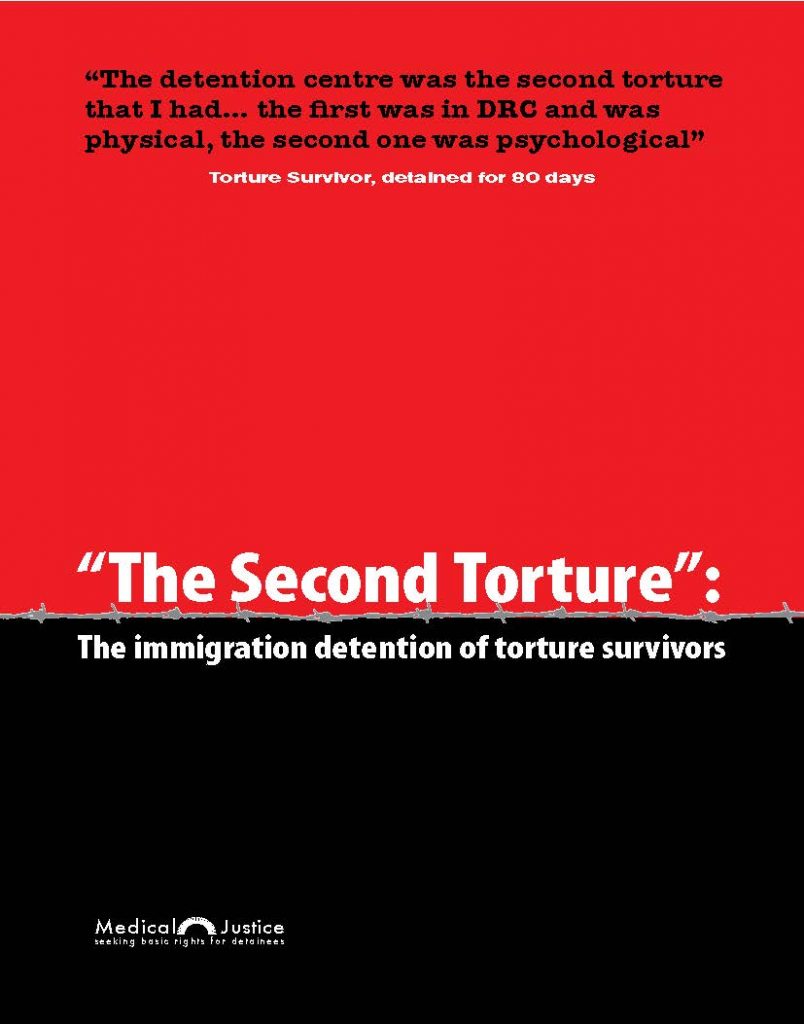Victims of torture are routinely being held in immigration detention centres in breach of the government’s own rules. This report investigates Rule 35 of the Detention Centre Rules 2001: the primary safeguard to facilitate the release of torture survivors and vulnerable people from detention.
This report exposes start to end process failure. Of the 50 cases analysed, only one person was released through the Rule 35 process. Torture survivors were failed so badly that two of them were removed and tortured again in their home country before they made it back to the UK to claim asylum again. Apart from these two, no others were removed which begs the question why they were detained for the purpose of removing them in the first place.
“Surviving torture and surviving detention is equally very hard experience. I won’t forget neither as they are like wounds in my heart. I couldn’t talk to anyone about it.”
– Tortured in his home country; detained in the UK
The report is based on 50 people who were held in detention some time between May 2010, when the coalition government took office, and May 2011. All cases included in the sample involved torture and had a medico-legal report (MLR) or medical letter produced for them by Medical Justice independent doctors, which revealed injuries that accorded well with their accounts of torture.
They fled to this country in pursuit of sanctuary. Instead, they were detained for administrative purposes and the safeguarding mechanism that should identify and release them, failed to do so in all but one example.
The primary data sources relied upon in this investigation include immigration case files, healthcare notes, questionnaires completed by (ex) detainees and MLRs. The 50 people reported having endured various methods of torture. For example, beatings with various objects including: gun butts; bats or batons; sticks; cable wires; or metal objects as well as whippings. 16 out of the 50 suffered rape or instrumental rape. Everyone in the sample suffered from ongoing physical and/or mental effects owing to their torture and all have medical evidence supporting their accounts.
The Second Torture also traced the failure by the Home Office to address criticisms of the Rule 35 process by HMIP and stakeholders as well as concerns about the department’s conduct of audits and of refusals and delays in publishing the outcomes. Medical Justice’s analysis was that the procedures surrounding Rule 35(3) were not fit for purpose, there was inadequate training, with ill-considered responses from the Home Office and a lack of overall accountability.
Detained peoples’ experiences, assessed by standardised questionnaires, were reflected as overwhelmingly negative when considering the Home Office’s treatment of their torture claim, detention healthcare’s response to their health concerns arising from the torture and their overall assessment of the quality of healthcare. The report also identified common themes of emotional mistreatment by detention staff, increased psychological symptoms, self-harm and suicidal ideation.
Detailed assessment of medical records showed the Rule 34 process was flawed, with a high level of individuals where no assessment took place. When an assessment was conducted this was generally brief and inaccuracies were noted. There were significant discrepancies between the diagnoses of trauma-related mental illness made in the context of subsequent medico-legal assessments and information obtained at a Rule 34 appointment. There was also a lack of access to medical records from the community with adverse consequences for care.
Overall, Rule 35 was assessed as ineffective, with requests for assessments having to be prompted by external organisations. The standard Rule 35 forms were often incomplete, lacking in clinical information and failed to address the effect of continuing detention. Home Office responses to such reports only led to the release of one individual from the sample. The systemic failures in the responses to Rule 35(3) reports were summarised as failing to provide adequate reasons for continued detention and an inability to properly consider medical evidence. Wider systemic issues referenced in the report included a lack of knowledge and training, as well as attitudinal problems of both Home Office and healthcare staff involved in the Rule 35 process. This was compounded by poor quality healthcare in detention and a lack of accountability for flaws in the process. The report made brief reference to a high proportion of the files considered involving a complaint of assault in detention.

